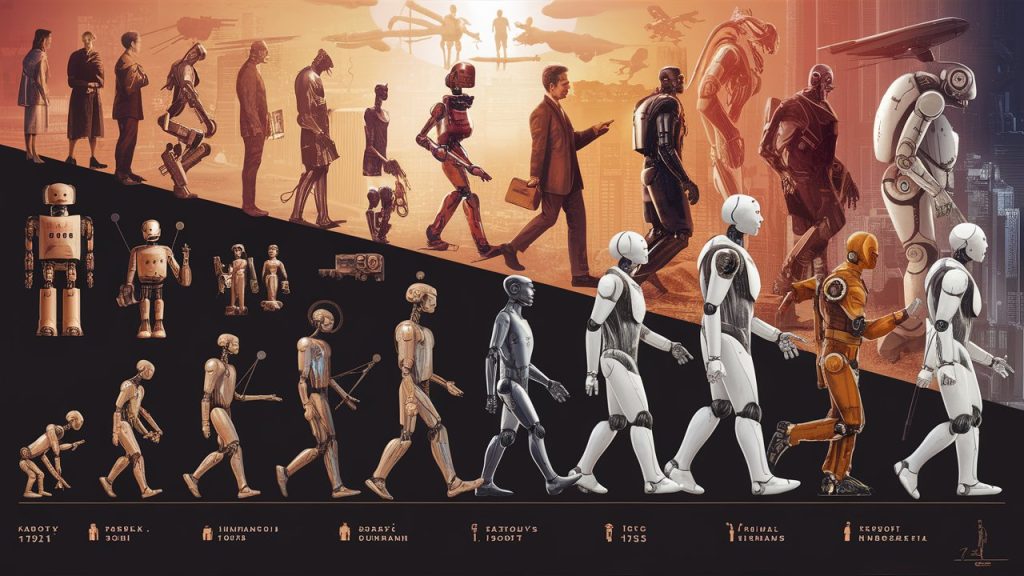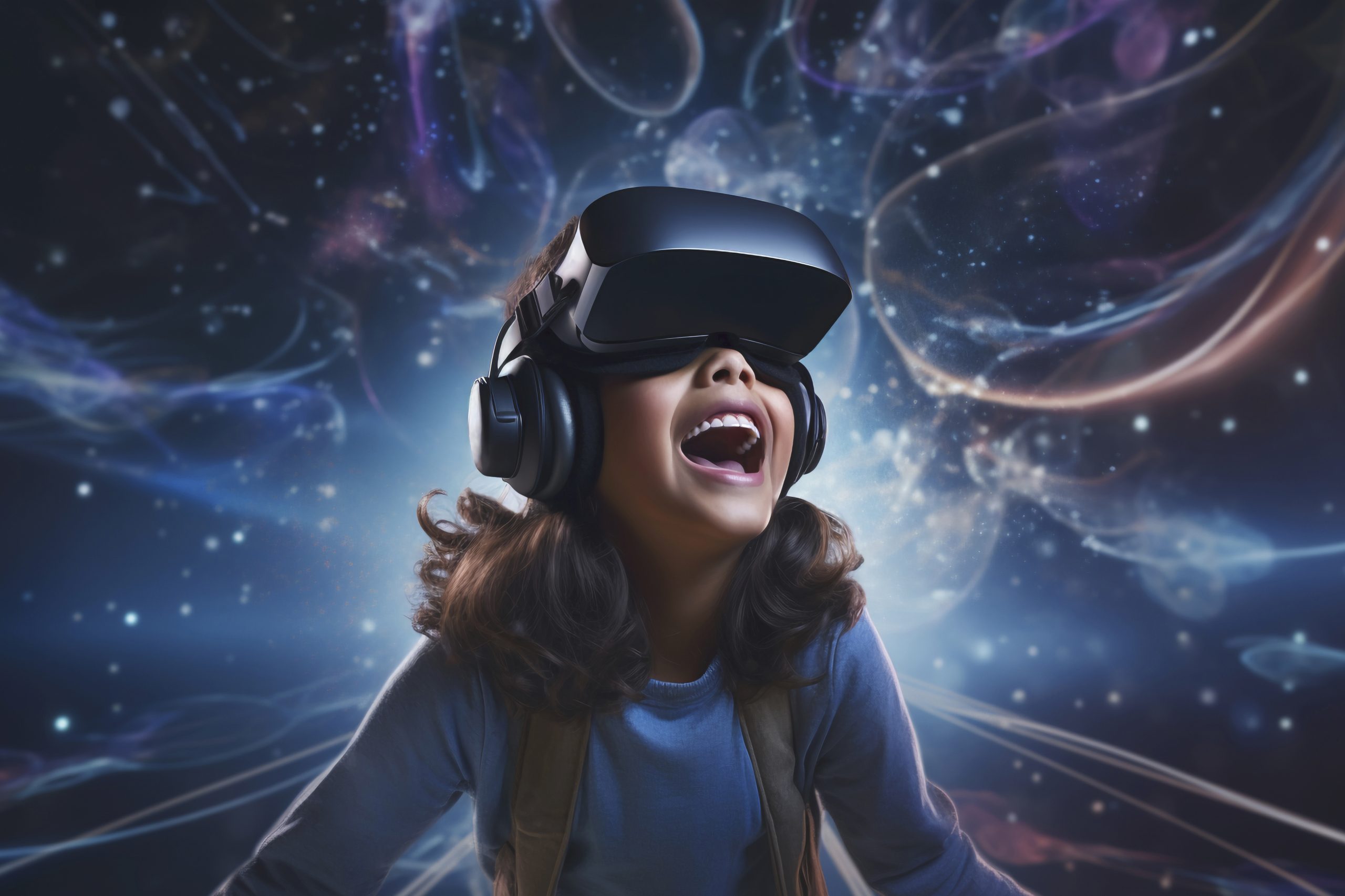Artificial intelligence is a specialty within computer science that is concerned with creating systems that can replicate human intelligence and problem-solving abilities. They do this by taking in a myriad of data, processing it, and learning from their past in order to streamline and improve in the future. A normal computer program would need human interference in order to fix bugs and improve processes.
The History of Artificial Intelligence:
The idea of “artificial intelligence” goes back thousands of years, to ancient philosophers considering questions of life and death. In ancient times, inventors made things called “automatons” which were mechanical and moved independently of human intervention. The word “automaton” comes from ancient Greek, and means “acting of one’s own will.” One of the earliest records of an automaton comes from 400 BCE and refers to a mechanical pigeon created by a friend of the philosopher Plato. Many years later, one of the most famous automatons was created by Leonardo da Vinci around the year 1495.
So while the idea of a machine being able to function on its own is ancient, for the purposes of this article, we’re going to focus on the 20th century, when engineers and scientists began to make strides toward our modern-day AI.
Groundwork for AI 1900-1950:
In the early 1900s, there was a lot of media created that centered around the idea of artificial humans. So much so that scientists of all sorts started asking the question: is it possible to create an artificial brain? Some creators even made some versions of what we now call “robots” (and the word was coined in a Czech play in 1921) though most of them were relatively simple. These were steam-powered for the most part, and some could make facial expressions and even walk.
Notable Dates
- 1921: Czech playwright Karel Čapek released a science fiction play “Rossum’s Universal Robots” which introduced the idea of “artificial people” which he named robots. This was the first known use of the word.
- 1929: Japanese professor Makoto Nishimura built the first Japanese robot, named Gakutensoku.
- 1949: Computer scientist Edmund Callis Berkley published the book “Giant Brains, or Machines that Think” which compared the newer models of computers to human brains.
Birth of AI: 1950-1956
This range of time was when the interest in AI really came to a head. Alan Turing published his work “Computer Machinery and Intelligence” which eventually became The Turing Test, which experts used to measure computer intelligence. The term “artificial intelligence” was coined and came into popular use.
Notable Dates
- 1950: Alan Turing published “Computer Machinery and Intelligence” which proposed a test of machine intelligence called The Imitation Game.
- 1952: A computer scientist named Arthur Samuel developed a program to play checkers, which is the first to ever learn the game independently.
- 1955: John McCarthy held a workshop at Dartmouth on “artificial intelligence” which is the first use of the word, and how it came into popular usage.
AI Maturation: 1957-1979
The time between when the phrase “artificial intelligence” was created, and the 1980s was a period of both rapid growth and struggle for AI research. The late 1950s through the 1960s was a time of creation. From programming languages that are still in use to this day to books and films that explored the idea of robots, AI became a mainstream idea quickly.
The 1970s showed similar improvements, such as the first anthropomorphic robot being built in Japan, to the first example of an autonomous vehicle being built by an engineering grad student. However, it was also a time of struggle for AI research, as the U.S. government showed little interest in continuing to fund AI research.
AI Boom: 1980-1987
Most of the 1980s showed a period of rapid growth and interest in AI, now labeled as the “AI boom.” This came from both breakthroughs in research, and additional government funding to support the researchers. Deep Learning techniques and the use of Expert System became more popular, both of which allowed computers to learn from their mistakes and make independent decisions.
Notable Dates
- 1980: The first expert system came into the commercial market, known as XCON (expert configurer). It was designed to assist in the ordering of computer systems by automatically picking components based on the customer’s needs.
- 1985: An autonomous drawing program known as AARON is demonstrated at the AAAI conference.
- 1986: Ernst Dickmann and his team at Bundeswehr University of Munich created and demonstrated the first driverless car (or robot car). It could drive up to 55 mph on roads that didn’t have other obstacles or human drivers.
- 1987: Commercial launch of Alacrity by Alactrious Inc. Alacrity was the first strategy managerial advisory system, and used a complex expert system with 3,000+ rules.
AI Winter: 1987-1993
As the AAAI warned, an AI Winter came. The term describes a period of low consumer, public, and private interest in AI which leads to decreased research funding, which, in turn, leads to few breakthroughs. Both private investors and the government lost interest in AI and halted their funding due to high cost versus seemingly low return. This AI Winter came about because of some setbacks in the machine market and expert systems, including the end of the Fifth Generation project, cutbacks in strategic computing initiatives, and a slowdown in the deployment of expert systems.
AI Agents: 1993-2011
Early 90s showed some impressive strides forward in AI research, including the introduction of the first AI system that could beat a reigning world champion chess player. This era also introduced AI into everyday life via innovations such as the first Roomba and the first commercially-available speech recognition software on Windows computers.
The surge in interest was followed by a surge in funding for research, which allowed even more progress to be made.
Notable Dates
- 1997: Deep Blue (developed by IBM) beat the world chess champion, Gary Kasparov, in a highly-publicized match, becoming the first program to beat a human chess champion.
- 1997: Windows released a speech recognition software (developed by Dragon Systems).
- 2000: Professor Cynthia Breazeal developed the first robot that could simulate human emotions with its face,which included eyes, eyebrows, ears, and a mouth. It was called Kismet.
- 2002: The first Roomba was released.
- 2003: Nasa landed two rovers on Mars (Spirit and Opportunity) and they navigated the surface of the planet without human intervention.
- 2006: Companies such as Twitter, Facebook, and Netflix started utilizing AI as a part of their advertising and user experience (UX) algorithms.
- 2010: Microsoft launched the Xbox 360 Kinect, the first gaming hardware designed to track body movement and translate it into gaming directions.
- 2011: An NLP computer programmed to answer questions named Watson (created by IBM) won Jeopardy against two former champions in a televised game.
- 2011: Apple released Siri, the first popular virtual assistant.
Artificial Intelligence is Everywhere: 2012 – Present
That brings us to the most recent developments in AI, up to the present day. We’ve seen a surge in common-use AI tools, such as virtual assistants, search engines, etc. This time period also popularized Deep Learning and Big Data.
Notable Dates
- 2016: Hanson Robotics created a humanoid robot named Sophia, who became known as the first “robot citizen” and was the first robot created with a realistic human appearance and the ability to see and replicate emotions, as well as to communicate.
- 2017: Facebook programmed two AI chatbots to converse and learn how to negotiate, but as they went back and forth they ended up forgoing English and developing their own language, completely autonomously.
- 2018: A Chinese tech group called Alibaba’s language-processing AI beat human intellect on a Stanford reading and comprehension test.
- 2019: Google’s AlphaStar reached Grandmaster on the video game StarCraft 2, outperforming all but .2% of human players.
- 2020: OpenAI started beta testing GPT-3, a model that uses Deep Learning to create code, poetry, and other such language and writing tasks. While not the first of its kind, it is the first that creates content almost indistinguishable from those created by humans.
- 2021: OpenAI developed DALL-E, which can process and understand images enough to produce accurate captions, moving AI one step closer to understanding the visual world.
- 2022: DALL-E was integrated in ChatGPT showcasing AI’s capacity to generate images and texts respectively, sparking excitement over new creative possibilities.
- 2023: Multimodality: A major AI breakthrough was the development of multimodal models that process data types like text, images, video, and audio. Innovations like OpenAI’s GPT and Google DeepMind’s Gemini led this trend, allowing interactions with AI through various modalities.
- 2024: Devin – First AI Software Engineer, Sora – Open AI’s text-to-video model.
Generative AI: Generative AI made significant strides in 2023, with the emergence of various models like Meta’s LLaMA 2, Google’s Bard chatbot, Baidu’s Ernie Bot, and OpenAI’s GPT-4. Despite initial hype, the year saw a focus on understanding the limitations and potential of generative AI, aiming to integrate it into practical applications for productivity enhancement.
Augmented Reality (AR) and Quantum Computing: Alongside AI, other technologies like AR and quantum computing also saw significant advancements in 2023. AR technologies, such as Apple’s Vision Pro headset, and quantum computing developments like IBM’s System Two and Heron quantum chip, marked notable progress in their respective fields, hinting at a future where these technologies could play a more integrated role in everyday life
Examples of AI Systems
The global artificial intelligence market is over $136.6 billion, while the AI industry is expected to grow by 13x in the next seven years with a CAGR (compound annual growth rate) of 38.1%. Another report shows that 87% of global companies think AI gives them a competitive edge in the market. Be it in our personal or professional life, we cannot avoid using AI products in some form.
AI has already made a positive impact across a broad range of industries. It can automate processes to free employees of unnecessary labor, provide personalized learning options for students, enable cybersecurity companies to deploy faster solutions and help fashion companies design better-fitting clothing for their customers.
And this is only the beginning.
Let’s take a deeper dive into other artificial intelligence examples further demonstrating AI’s diverse applications.
- Manufacturing Robots: Manufacturing robots are AI-powered machines designed to automate various tasks in the manufacturing process, from assembly to packaging. Companies like Tesla, Toyota, and BMW are utilizing these robots extensively in their production lines. These robots can perform repetitive tasks with high precision and efficiency, leading to increased productivity and reduced labor costs.
- Self-Driving Cars: Self-driving cars, also known as autonomous vehicles, utilize AI algorithms and sensors to navigate roads without human intervention. Companies like Waymo (a subsidiary of Alphabet Inc.), Tesla, and General Motors (through its subsidiary Cruise) are leading the development of self-driving technology. These companies use AI to analyze sensor data in real-time, recognize objects and obstacles, and make driving decisions to ensure passenger safety.
- Smart Assistants: Smart assistants, such as Amazon’s Alexa, Apple’s Siri, and Google Assistant, leverage AI to understand and respond to users’ voice commands. These assistants can perform tasks like setting reminders, answering questions, and controlling smart home devices. Companies like Amazon, Apple, and Google integrate smart assistant technology into their products, including smartphones, smart speakers, and other connected devices.
- Healthcare Management: AI is revolutionizing healthcare management by streamlining administrative tasks, analyzing medical data, and improving patient care. Companies like IBM with its Watson Health platform, Cerner Corporation, and Siemens Healthineers use AI to develop solutions for medical imaging analysis, patient diagnosis, and personalized treatment planning. These AI-driven systems help healthcare providers make more informed decisions and improve patient outcomes.
- Automated Financial Investing: Automated financial investing platforms, such as Wealthfront, Betterment, and Robinhood, use AI algorithms to manage investment portfolios autonomously. These platforms analyze market trends, risk profiles, and individual preferences to optimize investment strategies. Companies offering these services use AI to provide personalized investment advice, rebalance portfolios, and maximize returns for their clients.
- Virtual Travel Booking Agent: Virtual travel booking agents, like Expedia and Booking.com, leverage AI to provide personalized travel recommendations and assistance to users. These platforms use AI algorithms to analyze user preferences, historical booking data, and real-time travel information to suggest tailored travel itineraries, accommodations, and activities. Companies in the travel industry integrate AI into their booking platforms to enhance the user experience and increase customer satisfaction.
What Does the Future Hold?
Now that we’re back to the present, there is probably a natural next question on your mind: so what comes next for AI?
Well, we can never entirely predict the future. However, many leading experts talk about the possible futures of AI, so we can make educated guesses. We can expect to see further adoption of AI by businesses of all sizes, changes in the workforce as more automation eliminates and creates jobs in equal measure, more robotics, autonomous vehicles, and so much more.



